There is a growing effort to reconnect swimmers with city waterways once thought permanently lost to pollution
From the time he first felt the water around his ankles when his family filled up their new pool, to his first tentative steps into Sydney Harbour, Pete Magner has always been swimming.
The 47-year-old says the water is where he feels most free.
“For me getting in and being under the water is really calming,” he says.
“It’s a beautiful thing in the harbour. You’re not really bound by any walls of a pool. It just feels like you’re more part of nature.”
As the pandemic brought restrictions on travel, Magner says his family soon discovered Chiswick Baths, a small netted splash area along the Parramatta River – along with a host of others.
“It was weird going to a suburban park when it was like they were at the beach,” Magner says. “People were there sun baking, there were people in bikinis out.”
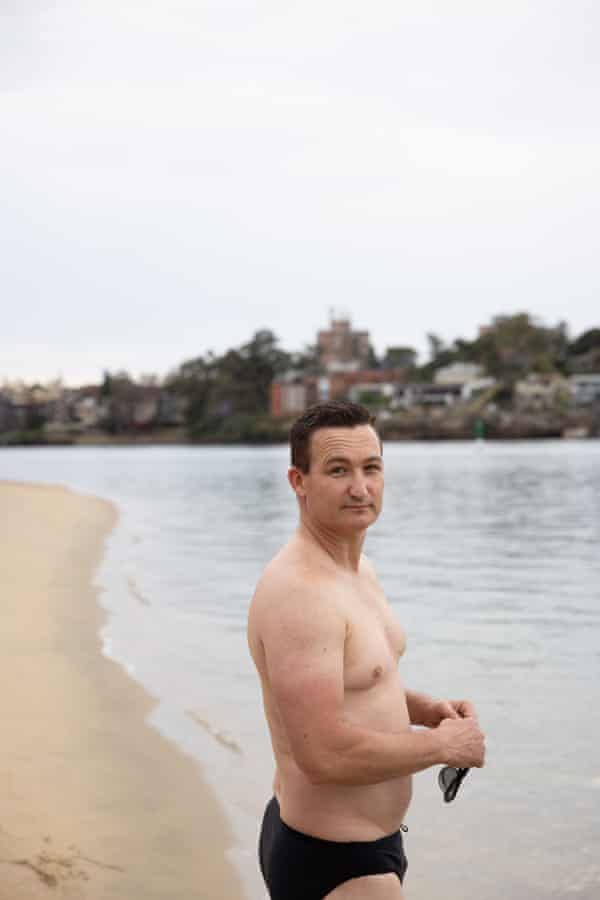
“It feels like a mini adventure. Finding somewhere to swim on your doorstep, it feels like you’re exploring, which is pretty good for the kids to find fun just where they are.”
The baths are among a growing list of sites across Australia helping to reconnect swimmers with urban rivers and driving the clean-up of polluted waterways once thought permanently lost.
Recent months have seen proposals from City of Sydney Lord Mayor Clover Moore for a floating pool in Sydney Harbour, a filtered pool in the Torrens in South Australia and a “sea-creature friendly” pool in East Fremantle, Western Australia.
In Melbourne talk of building a river pool on the banks of the Yarra began a decade ago, with the latest iteration of the design including an artificial wetland. The City of Melbourne is now investigating the feasibility of a river pool as part of a $300m plan to transform the north bank of the Yarra into a series of parks.
On Thursday the NSW minister for planning and public spaces, Rob Stokes, pledged $50m in part to help make the state’s waterways clean enough for swimming.
“One of the lessons [from the recent lockdown] we really learned … was that our parklands and opportunities to enjoy places to roam, places to swim or places to play are not spread equitably across the city,” Stokes said.
These proposals are a local variation on a global movement already under way in cities like Copenhagen, Portland, Berlin, New York and Boston – one which Marco Amati, associate professor at RMIT’s school of global, urban and social studies says represents “a form of subversive environmental activism”.
“It’s a way of getting people used to the idea that the river can be clean and swimmable again,” Amati says. “When people don’t have much contact with the river, people don’t care so much whether it’s polluted. If it’s something people want to swim in, you have to make sure it’s clean.”
‘The river used to stink’
Suggesting a dip in the Torrens or a dive in the Yarra may be met with a look of horror or disgust today, but the cultural prejudice against river swimming is a relatively recent development among Australians.
Colonial authorities might have sought to brutally alter rivers near large urban settlements from the point of colonisation – a waterfall near Queen’s Bridge in Melbourne today was dynamited and the course of the Yarra straightened to prevent flooding – yet people still maintained a connection with the waterways.
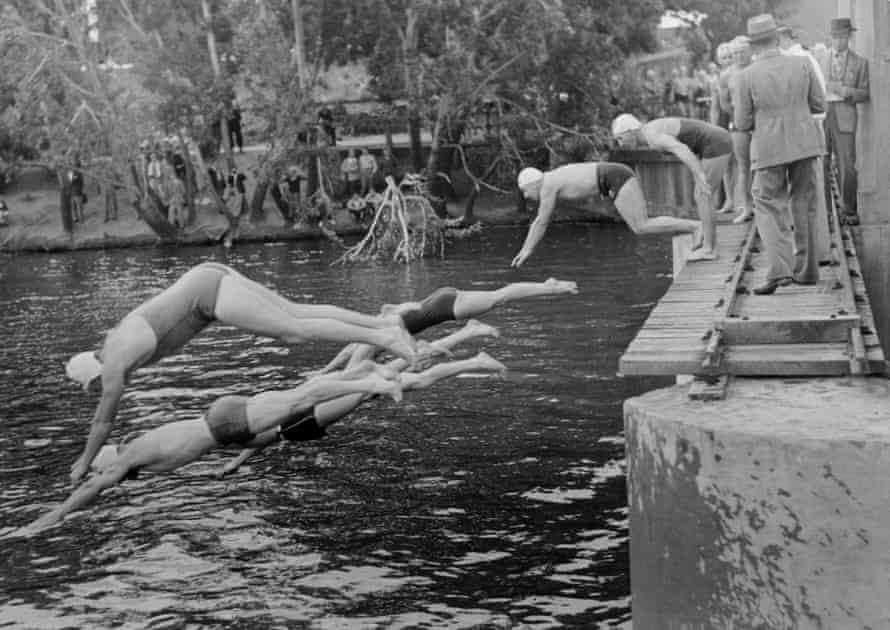
Urban rivers remained a place to swim and play. The Yarra itself was home to a world-famous three-mile swim race that began in 1913 at a time when swimming was considered an extreme sport.
This connection would be severed with the advent of heavy industry and a growing population that meant rivers were seen as cheap and convenient ways to wash away waste.
Today the factories may have disappeared from most capital cities but the toxic legacy of 30 years of manufacturing with no real environmental regulation remains.
In 2005 up to 60 eels were found floating dead in the Yarra while the Torrens – once home to the platypus – contained an “astonishing” level of heavy metal contamination. Even the stunning Sydney Harbour is itself home to several dead spots around stormwater and sewer outlets, with some patches still polluted from decades of industrial and commercial activity.
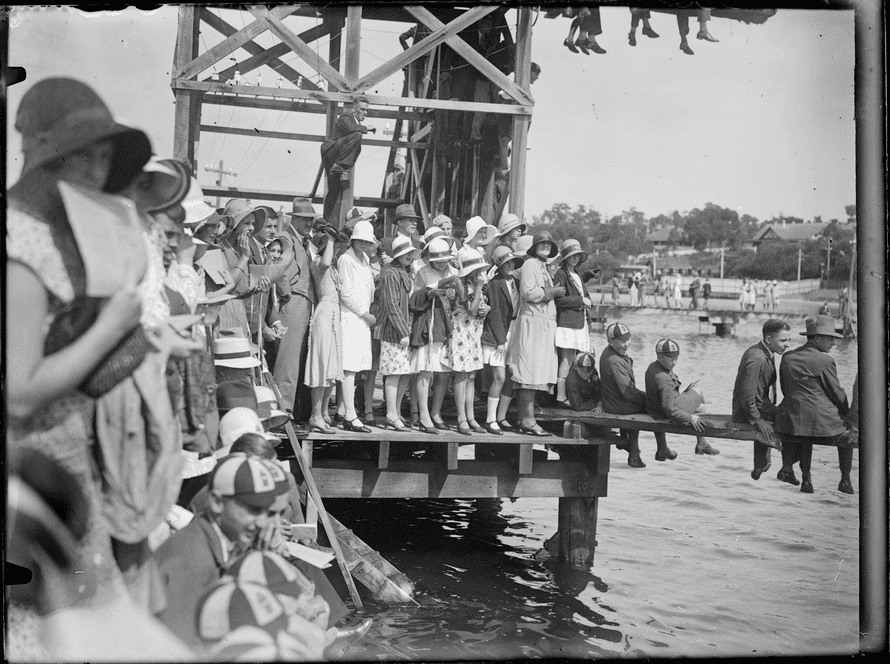
“As our Aboriginal friends like to say, for 30,000 or so years before we came along it was all really tickety-boo,” Mark Drury says.
Drury is a councillor with the Inner West council and chair of the Parramatta River Catchment Group, an alliance of nine local councils, three state government agencies and a “myriad” of community groups who in 2008 took up the work of cleaning the river.
To build support they set a goal of making the river swimmable by 2025 – an outcome unimaginable for many who remembered the factories that once operated in Homebush Bay making petrol, batteries, pesticide and paint.
But Drury says breaking through the prejudice was an essential first step.
“It plants the seed so people can imagine it,” he says.
After that the next step was to learn the scale of the challenge. Upon investigation, however, they quickly learned that the river had already begun to heal, allowing the councils to focus on speeding up the process.
Since then, water quality in the Parramatta has significantly improved. Four river pools are open to the public and there are plans for more as initial water quality tests show new areas to be safe.
As this monitoring has improved, so has the reporting of water quality information to the public in order to allow them to swim safely. Though this is not currently published in a central location, an interactive map is under development.
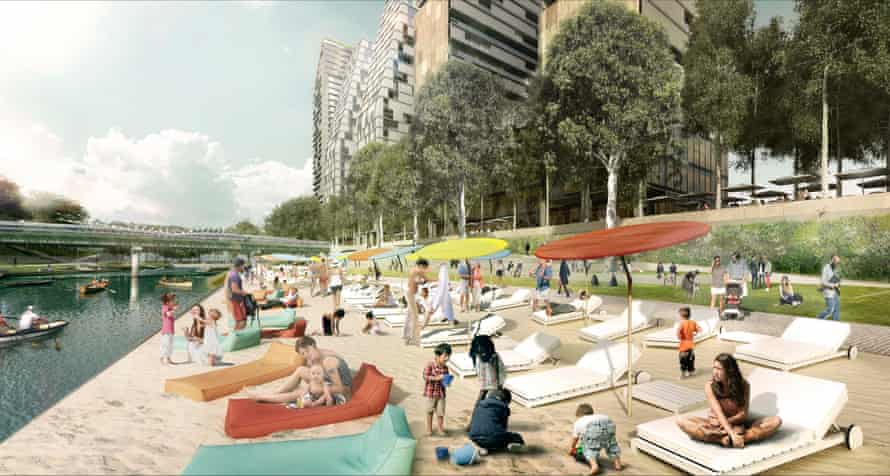
While there is more to be done, Jerome Laxale, a councillor with Ryde city council who previously served as chair of Parramatta River Catchment Group says the impact has already been felt.
“The river used to stink,” Laxale says. “It doesn’t smell any more. That’s great.”
Laxale says houses in areas like Melrose Park were once built facing away from the water in a sign people had quite literally turned their backs on the river.
That is now changing as people and wildlife, such as the critically endangered Bar Tailed Godwit, return to the banks of the river.
“It’s also egalitarian,” Laxale says. “The river doesn’t belong to anyone, it belongs to everyone. This whole process has turned everyone’s attention to this amazing natural resource that has been used by people here for millennia.”
‘Beautiful until you test the water’
If industrialisation drove people away from rivers last century, the new threat is urbanisation.
Ian Wright, a water scientist with the University of Western Sydney and a river swimmer himself, says cleaning up a river system is only half the battle. The next challenge is keeping it clean.
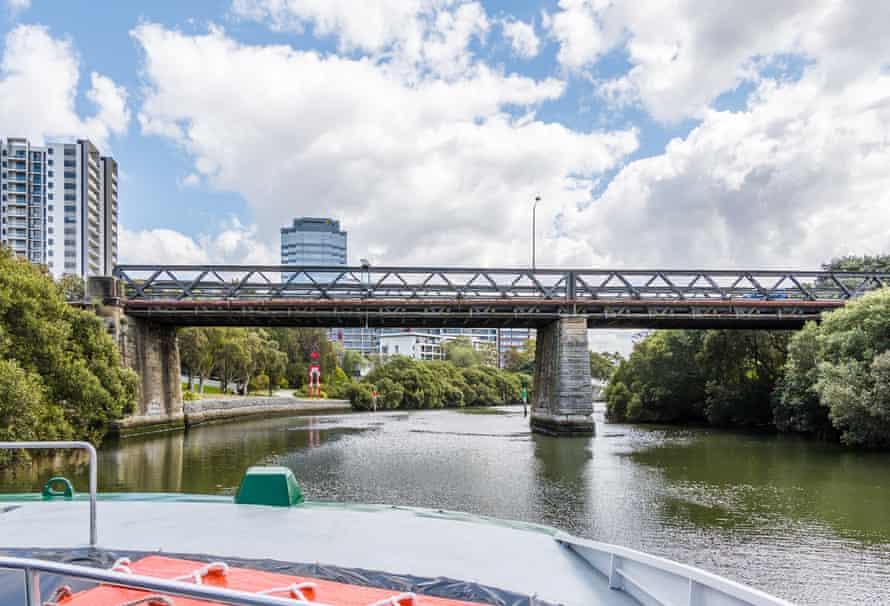
Growing populations mean the residue of humanity – oil dripping from car engines, pet faeces, run-off from construction sites and farms, leaking sewer lines – all wash into stormwater systems, which overflow untreated into rivers.
“Whatever the level of human activity, you can just about predict the impairment of water quality that will result,” Wright says.
Fixing the problem means diverting these systems in the same way they were restructured in the 90s to protect swimmers on Sydney beaches from sewage.
But Wright says there are also still threats from hold-out industrial operations in some areas.
One example is the Bargo River, a tributary of western Sydney’s Nepean River that feeds the Mermaid Pool, a spectacular natural water hole at Tahmoor Gorge which is a favoured swimming spot for residents who live well away from the beach.
“It looks beautiful until you test the water and see what’s in it,” Wright says.’
A nearby 40-year-old underground coalmine that supplies high quality coking coal to the Whyalla steelworks in South Australia and discharges 5.3 megalitres – roughly two Olympic swimming pools – of water into the river each day.

Wright says this water contains a “complex cocktail of contaminants” and on average makes up two-thirds of the flow of the river – though most who swim there would have no idea.
This is why he believes that regular and detailed report on levels of contamination is important for public safety and a necessary step in building support for cleaning up river systems.
“We only measure the things we care about,” Wright says. “Rivers are beautiful to swim in, but it is a huge act of faith to jump into a river – and really, it shouldn’t be faith. It should be driven by fact.”